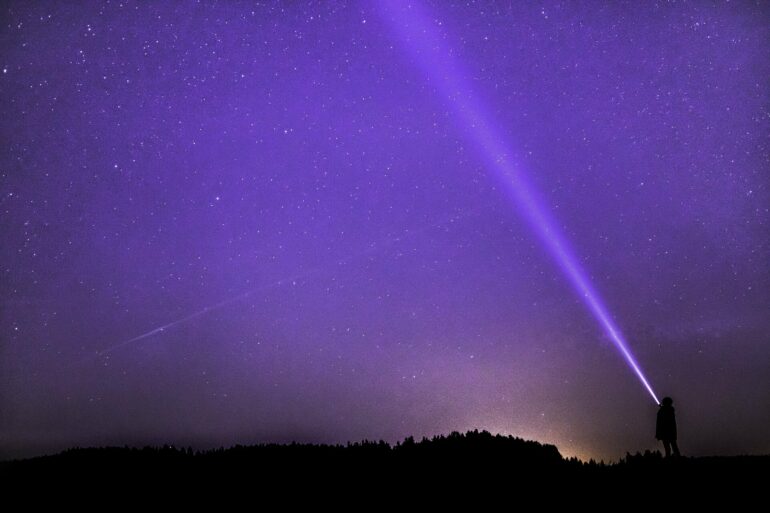From house plants and gardens to fields and forests, green is the color we most associate with surface life on Earth, where conditions favored the evolution of organisms that perform oxygen-producing photosynthesis using the green pigment chlorophyll a.
But an Earth-like planet orbiting another star might look very different, potentially covered by bacteria that receive little or no visible light or oxygen, as in some environments on Earth, and instead use invisible infrared radiation to power photosynthesis.
Instead of green, many such bacteria on Earth contain purple pigments, and purple worlds on which they are dominant would produce a distinctive “light fingerprint” detectable by next-generation ground- and space-based telescopes, Cornell scientists report in new research.
“Purple bacteria can thrive under a wide range of conditions, making it one of the primary contenders for life that could dominate a variety of worlds,” said Lígia Fonseca Coelho, a postdoctoral associate at the Carl Sagan Institute (CSI) and first author of “Purple is the New Green: Biopigments and Spectra of Earth-like Purple Worlds,” published in Monthly Notices of the Royal Astronomical Society.
“We need to create a database for signs of life to make sure our telescopes don’t miss life if it happens not to look exactly like what we encounter around us every day,” added co-author Lisa Kaltenegger, CSI director and associate professor of astronomy in the College of Arts and Sciences.
Astronomers have confirmed more than 5,500 exoplanets to date, including more than 30 potentially Earth-like planets. Planned observatories such as the Extremely Large Telescope and Habitable Worlds Observatory will explore the chemical makeup of these worlds in their stars’ habitable zones—where conditions are conducive to the existence of liquid water on surface—and analyses of their composition.
Using life on Earth as a guide, CSI’s multidisciplinary team of scientists—also including William Philpot, professor emeritus in the School of Civil and Environmental Engineering in Cornell Engineering, and Stephen Zinder, professor emeritus of microbiology in the College of Agriculture and Life Sciences—are cataloging the colors and chemical signatures that a diverse range of organisms and minerals would present in an exoplanet’s reflected light.
Coelho collected and grew samples of more than 20 purple sulfur and purple non-sulfur bacteria that may be found in a variety of environments, from shallow waters, coasts, and marshes to deep-sea hydrothermal vents.
Zinder and Coelho scooped some samples from a pond on Cornell’s campus, while others were
